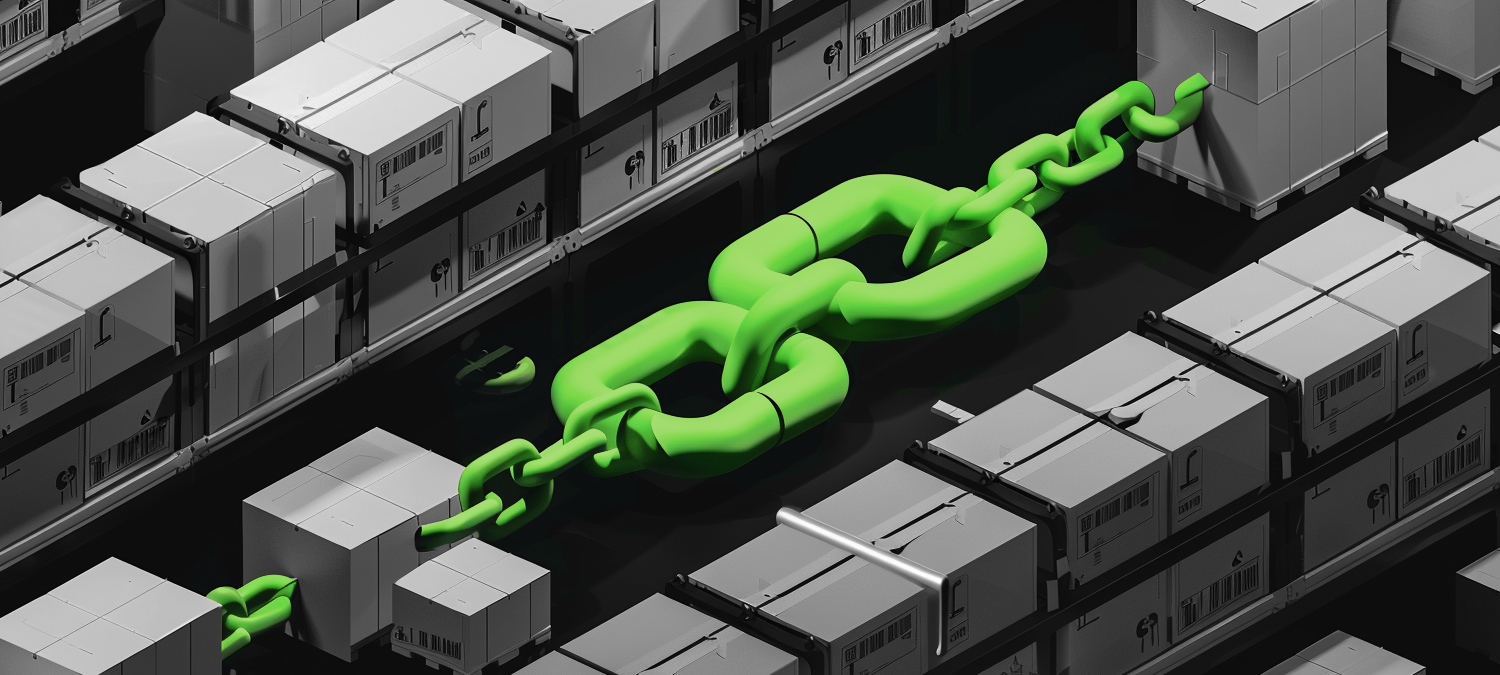During the pandemic, the supply chain underwent significant changes. Despite its easing in 2023, the business sphere continues to feel its effects. Over the past year, more than 80% of companies have encountered their supply chain issues.
The unstable geopolitical situation, issues in two key maritime shipping points, labor shortages, and growing consumer expectations… All these factors today shape a new reality for logistics, requiring innovative approaches to supply chain management.
In this article, we will examine the key supply chain challenges that businesses faced in 2024. At the same time, we will discuss how to successfully overcome crisis moments and develop your business in the new reality.
- Key Supply Chain Issues in 2024
- 5 Strategies That Will Help You Overcome Supply Chain Issues in 2024
- Conclusion: The Future of Supply Chains
- Frequently Asked Questions
Key Supply Chain Issues in 2024
Disruptions in the supply chain can lead to production delays, shortages of goods in the market, and revenue loss. Therefore, maintaining its continuity is one of the key priorities for companies worldwide.
And to successfully maintain this continuity, it is important to be aware of all the supply chain issues your business may face today.
Geopolitical tensions
Geopolitical tension is one of the key issues impacting global trade and manufacturing. In 2022, the conflict between Russia and Ukraine exacerbated existing global supply chain issues. The blockade of ports and railway routes created difficulties for suppliers and manufacturers, limiting their ability to meet deadlines and maintain normal production pace. The increase in shipping costs due to rising tariffs added additional pressure on already vulnerable economic systems.
The risk of blocking shipping routes through the Red Sea due to Hamas attacks on Israel has become an additional threat to the global supply chain today. Companies are forced to rethink trade routes that have existed for decades and actively seek alternative suppliers. All of this entails additional expenses for businesses.
Due to the attacks by the Houthis, key players in global shipping canceled their Red Sea routes as early as December last year. They redirected ships along a longer and more costly route via the Cape of Good Hope.
Climate change
In recent years, we have all witnessed the horrific consequences of climate change around the world. Droughts, hurricanes, floods, and fires are occurring more frequently and with greater intensity. They pose serious challenges for various sectors of the economy, including supply chains.
Unstable weather conditions are causing delays in deliveries, destruction of transportation infrastructure, and damage to goods. This has a detrimental impact on businesses and consumers, leading to increased expenses and revenue loss.
The summer of 2023 was marked by an abnormal drought in the Panama Canal, a key point connecting the Atlantic and Pacific Oceans. The number of ships passing through the canal was halved, leading to delays, bottlenecks, and complicating trade deliveries. A similar situation occurs annually on the Rhine River. Last year, even heavy rain failed to restore the water level necessary for ships of traditional size to pass through.
Rising inflation
Despite the decrease in overall inflation in early 2024, political conflicts and climate shocks continue to impact the global economy. According to forecasts by the Organization for Economic Cooperation and Development (OECD), economic growth for this year is expected to remain weak.
The persisting inflation may lead to an increase in prices for logistic services and reduce purchasing power. The cost of materials, energy, and labor is likely to rise. Along with them, there will be an increase in prices for production, storage, and transportation of goods.
In such conditions, companies are forced to reconsider their supply chain management strategies. This includes searching for efficient logistic solutions, diversifying suppliers, and striving for more flexible and adaptive business models.
Raw material shortage
Sanctions resulting from political conflicts, natural disasters, and rising inflation have become catalysts for an additional challenge – raw material shortages. For supply chains, this issue means supply instability, production delays, and increased costs.
The raw material shortage persisted throughout 2023. The problem affected various sectors, especially food products and industrial metals. Today, a number of economic and political complexities persist.
Trade restrictions and sanctions continue to disrupt supply continuity. Additionally, rising inflation adds new supply chain challenges, increasing costs for production and logistics. Economic instability creates uncertainty in predicting future raw material prices and complicates budgeting for companies.
The increasing risk of raw material shortages is exacerbated by the frequent occurrence of natural disasters. These events lead to an unstable supply and can result in production stoppages due to a lack of resources. Companies are forced to look for alternative sources of raw materials, diversify their suppliers and develop risk management strategies.
Rise in fuel and energy prices
The conflict between Russia and Ukraine has had a significant impact on global fuel and electricity prices. Companies have faced serious supply chain issues. Transportation and storage have become more expensive. This has created the need to search for efficient strategies to reduce costs and ensure stability in the face of uncertainty in the global energy markets.
High consumer expectations
After the pandemic, there has been an explosive growth in ecommerce, which has changed the dynamics of retail sales. With the increasing availability of products in the online space, consumers have become more demanding regarding purchasing conditions. More than 50% of consumers express willingness to refrain from repeat purchases from a company if the goods are not delivered within two days.
This new level of expectations has created a supply chain issues of online retailers. The need to ensure prompt delivery has become a key factor of competitiveness for them. Companies are forced to constantly optimize their supply chains to meet growing demands.
Labor shortages
The COVID-19 pandemic has impacted the global economy. Border closures and healthcare restrictions have led many companies to struggle with difficulties in attracting and retaining qualified employees. Today, 4 out of 5 employers are experiencing labor shortages.
For supply chains, this issue entails increased competition for limited labor resources. This can result in delays in production processes, increased operational costs, and loss of operational flexibility. Solving the problem requires companies to adopt innovative approaches to personnel management and develop attractive strategies for recruiting new talent.
Increase in cyberattacks
Over the past decades, the supply chain has undergone significant changes. Today, effective supply chain management includes various aspects such as planning, procurement, manufacturing, logistics, and risk management.
Its reliance on technology has increased the risk of cyberattacks and data theft. In November 2023, Australia’s largest port operator, DP World, faced a serious cyberattack and was forced to disconnect the port network from the Internet. The cyber incident caused serious supply chain issues for many companies. Cargo processing was halted, and thousands of containers with shipments became stranded in ports across the country.
Cybercriminals target different levels of the supply chain, including suppliers, manufacturers, logistics companies and retailers. Such situations result in delivery delays, leaks of confidential information, loss of customer and partner trust and damage to brand reputation. For this reason, ensuring cyber security is a top priority for online businesses today.
5 Strategies That Will Help You Overcome Supply Chain Issues in 2024
As you can understand from the above, in recent years, online businesses have faced a number of issues affecting the continuity of supply chains. To overcome these challenges, it is necessary to develop the right strategies. Below, we have provided 5 strategies that will allow you to adapt to changes and quickly respond to crisis situations.
Ensure additional inventory volume
Additional inventory will allow your company to respond more quickly to market changes, avoid supply delays, and minimize the risk of unmet demand. However, to avoid supply chain issues, it is not enough to simply have extra inventory. It is necessary to carefully balance their level.
Excessive quantities can lead to surpluses, which cause additional costs for storage and inventory management. It is important to continuously analyze and forecast demand. In this way, you can maintain optimal stock levels without harming your business.
Diversify your supplier base
Supply chain issues associated with specific sources of production can be mitigated by increasing the supplier base. This will provide your company with additional sources of products and reduce the risks associated with difficulties at a single supplier.
The expansion of production sources also includes geographical diversification. Working with suppliers from different regions or countries can mitigate the effects of geopolitical and climatic risks.
Work with freight forwarders
Professional and competent freight forwarders are able to ensure the accuracy and punctuality of deliveries. Their specialized technologies and systems enable them to monitor the movement of goods in real time at all stages of delivery.
The freight forwarders’ expertise is also evident in the search for optimal routes and the selection of the most favorable transport companies. Thanks to their knowledge and contacts, they can offer various transportation options, taking into account the specifics of each individual shipment. This allows you to reduce both delivery times and costs.
Freight forwarders are also capable of promptly responding to potential problems that may arise along the way. They can provide alternative courses of action in case of delays or other unforeseen circumstances. Moreover, they actively participate in resolving these issues, minimizing their impact on the entire supply chain.
Identify alternative ports for delivery
In the face of global instabilities, it is important to have a Plan B for transporting goods. Economic sanctions, political conflicts, or natural disasters can seriously affect port operations. Having alternative routes available will help mitigate the impact of these supply chain issues.
Digitize your supply chains
One of the main advantages of digitization is the ability to automate many processes in the supply chain. Using modern management and monitoring systems will allow your company to have full visibility and control over logistical processes in real time. You will be able to quickly identify and address issues before they have a significant impact on your supply chain.
You can also use digital technologies to optimize inventory management and control. Intelligent forecasting systems and analytics allow your business to analyze data from previous deliveries and create more accurate demand forecasts. This helps to avoid overstocking, reduce costs and optimize the entire supply cycle.
Conclusion: The Future of Supply Chains
In the future, current supply chain issues will continue to present challenges for businesses. However, with the emergence of the Internet of Things (IoT), blockchain, and artificial intelligence (AI), supply chains promise to become more efficient and transparent.
Technologies will improve cargo tracking, optimize warehouse and delivery processes, as well as enhance the level of security and product quality control. They can significantly mitigate the impact of current and new supply chain challenges.
Of course, not all supply chain issues can be predicted and prevented. However, to effectively deal with them, your company must be prepared for constant optimization. Automated solutions like Ysell.pro can help track the movement of goods at every stage of the supply chain, optimize inventory management, and react more promptly to changes in demand or supply. You will be able to avoid your supply chain issues and improve the overall profitability of business processes.
Frequently Asked Questions
1. What is a supply chain disruption?
Supply chain disruption is an unexpected event or factor that leads to failures, delays, or changes in the normal flow of goods or services within the system.
2. How to adapt your processes to changes in weather conditions?
To adapt processes to changes in climate, implement environmentally sustainable technologies, develop contingency plans for emergencies, and regularly assess environmental risks.
3. How can companies address the issue of raw material shortages in supply chains?
The shortage of raw materials can be overcome by expanding sources of production and implementing more efficient inventory management.
4. What is a digital supply chain?
A digital supply chain is an approach to supply chain management that relies on modern technologies such as IoT, blockchain, and artificial intelligence.
5. What advantages does a digital supply chain provide for businesses?
A digital supply chain provides businesses with the opportunity for accurate forecasting and process automation. It enables reducing delivery times, improving shipment tracking, and enhancing overall efficiency.
6. How to prevent the impact of cyber attacks on digital supply chains?
The risk of cyber attacks can be reduced by implementing modern cybersecurity systems. Regularly train personnel on security practices, utilize secure networks, and conduct security audits.







